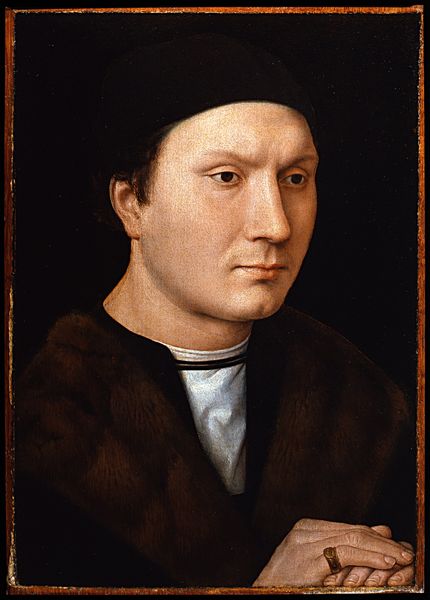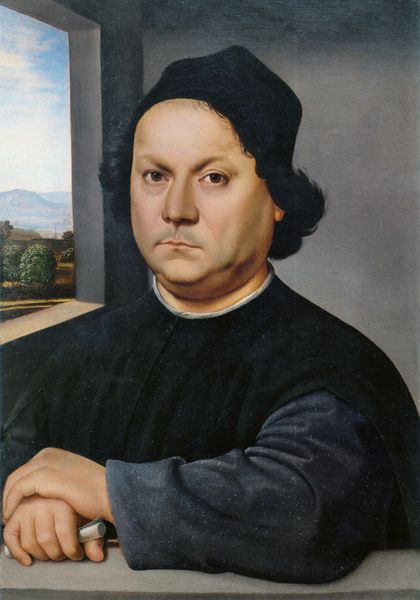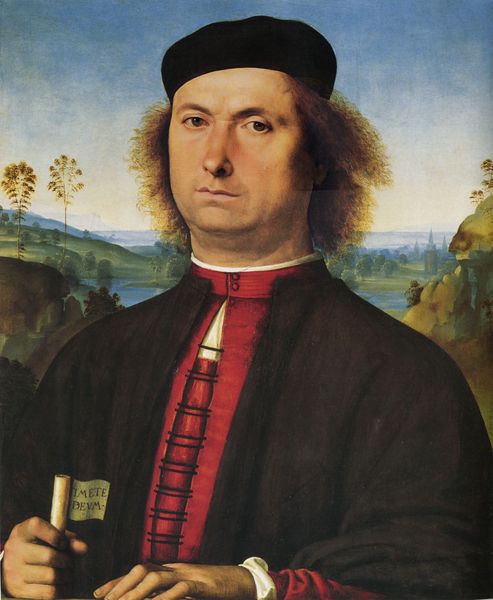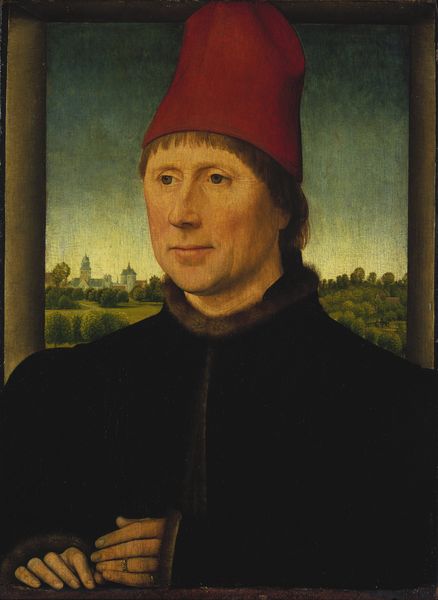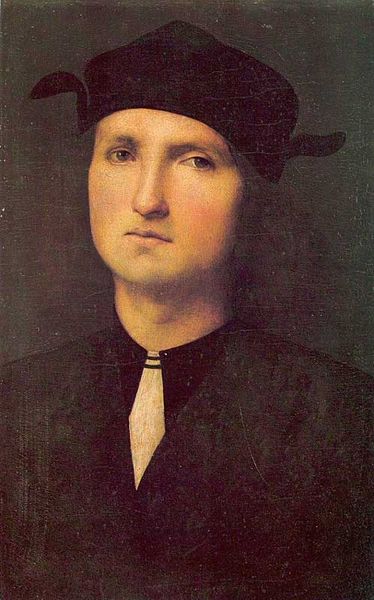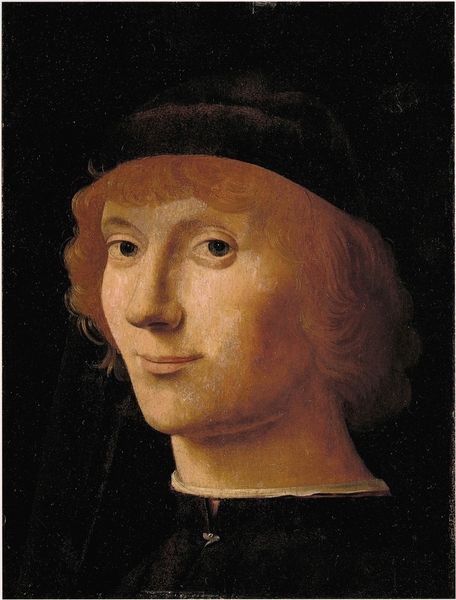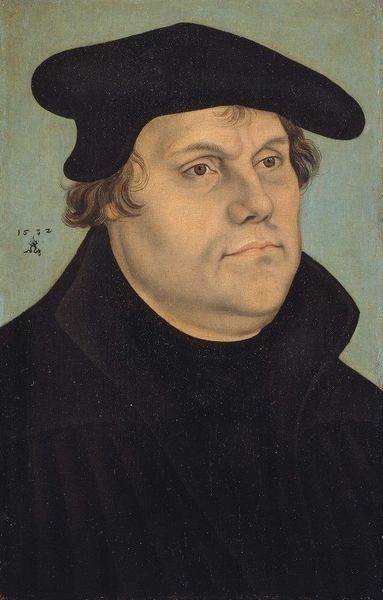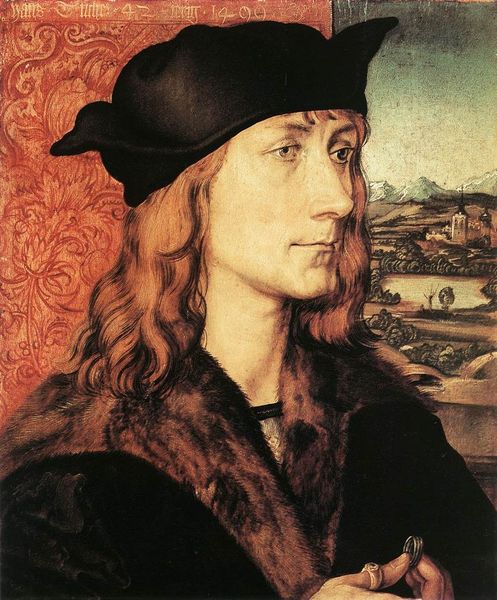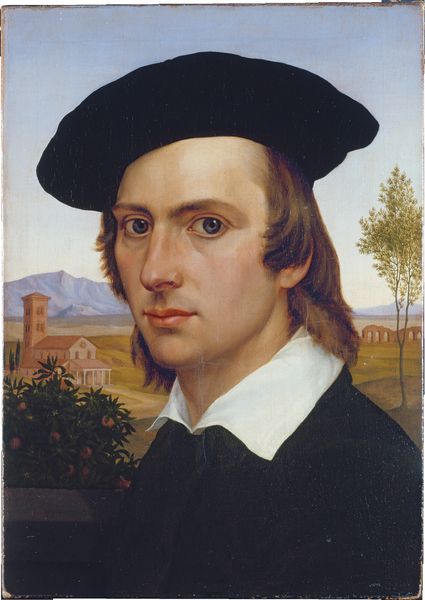
painting, oil-paint
#
portrait
#
painting
#
oil-paint
#
11_renaissance
#
italian-renaissance
#
realism
Dimensions: 53.5 x 43.6 x 0.9 cm
Copyright: Public Domain
Amico Aspertini's "Portrait of a Man," now at the Städel Museum, offers a glimpse into the cultural identity and social position of its time. Painted during the Renaissance, this portrait exists within a historical context where art served to immortalize and elevate individuals, often those of high social standing. Aspertini, working in Bologna, would have been influenced by the artistic and intellectual currents of the Italian Renaissance, which sought to revive classical ideals. The man's clothing suggests a certain degree of affluence and status. His gaze, though direct, holds a certain ambiguity, inviting viewers to project their interpretations onto his identity. What does it mean to capture a man's likeness in paint? How does an artwork reinforce or challenge traditional gender roles? The ring on his finger suggests marriage, while the landscape may represent his connection to land and property. Ultimately, "Portrait of a Man" invites us to consider the complexities of identity, representation, and social positioning.
Comments
stadelmuseum almost 2 years ago
⋮
Against a hazy flat landscape stands a half-figure of a young man wearing a black biretta. He is dressed in a white shirt with an embroidered ornamental collar, a black doublet and a cloak, also made of fine black material, falling from the shoulder. At first sight the picture appears unpretentious, but upon closer observation the subtle representation of hand position, angle of the head and the reflective, shy gaze become evident. This sensitive character study in the tradition of Perugino and Raphael is a product of the early creative phase of the Bologna-based artist.
Join the conversation
Join millions of artists and users on Artera today and experience the ultimate creative platform.
